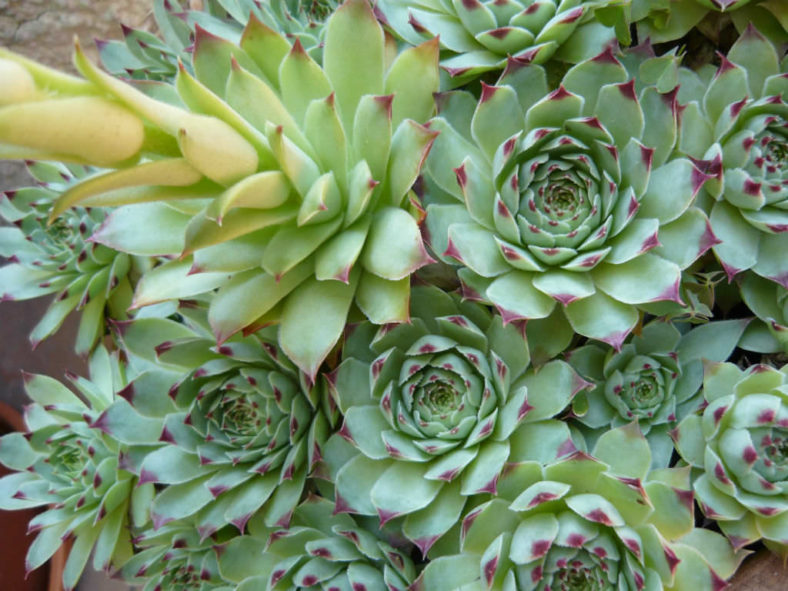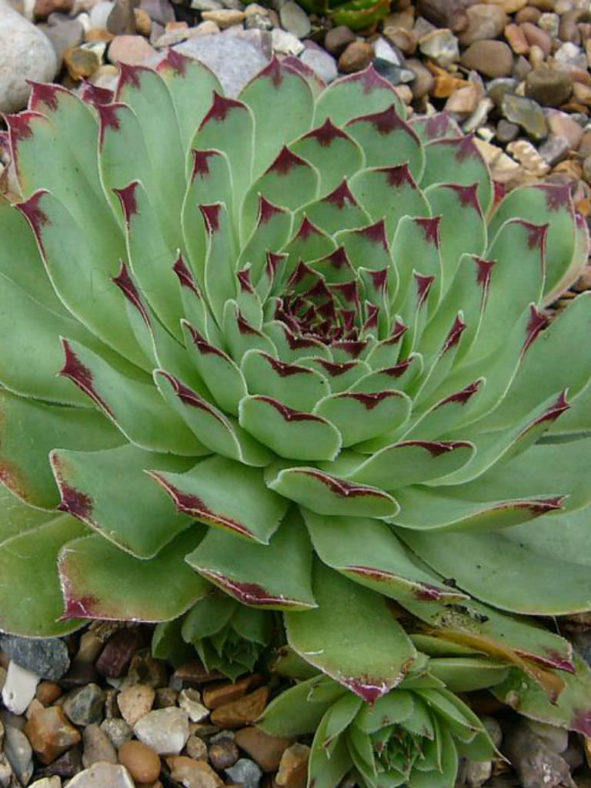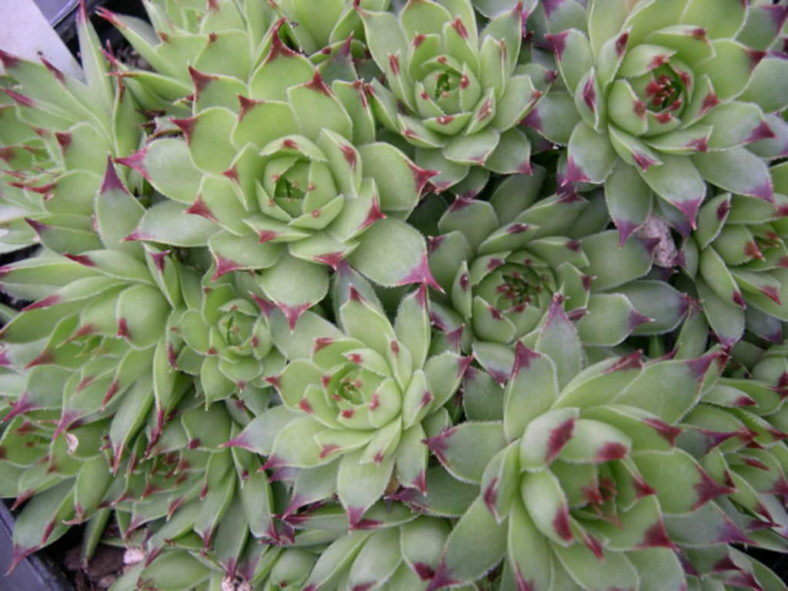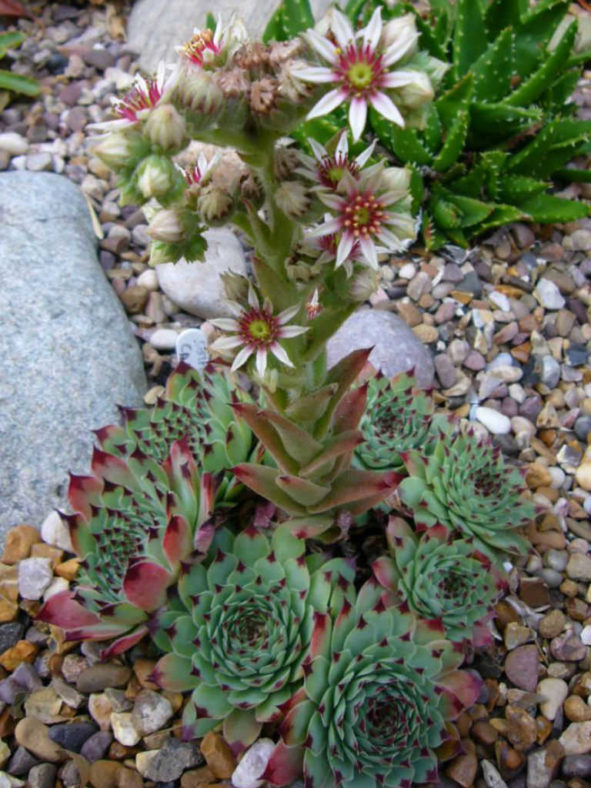Scientific Name
Sempervivum calcareum Jord.
Common Name(s)
Houseleek
Synonym(s)
Sempervivum californicum, Sempervivum tectorum subsp. calcareum, Sempervivum tectorum var. calcareum
Scientific Classification
Family: Crassulaceae
Subfamily: Sedoideae
Tribe: Sedeae
Subtribe: Sedinae
Genus: Sempervivum
Etymology
The specific epithet "calcareum" (pronounced "kal-KAR-ee-um") means "chalky" and refers to the natural habitat of this species.
Origin
Sempervivum calcareum is native to the southwest Alps. It grows on limestone rocks at elevations between 1,640 and 5,250 feet (500 and 1,600 m) from Triora in Italy up to the Dévoluy Mountains to the north of Gap in France.
Description
Sempervivum calcareum is a small succulent that forms rosettes of glaucous or pale green leaves with purple-brown tips. The rosettes usually grow between 2.4 and 4 inches (6 and 10 cm) in diameter and produce offsets on stout, sparingly leafy stolons, which can grow up to 1.6 inches (4 cm) long, creating a low-growing mat. The leaves are thick, fleshy, usually broad, with a stout, pungent mucro, and can measure up to 2.4 inches (6 cm) in length and 0.6 inches (1.5 cm) in width.
In summer, Sempervivum calcareum produces pale pink to greenish-white, star-shaped flowers, which are usually 8- to 10-merous and can reach a diameter of 1 inch (2.5 cm). They appear in clusters on an erect, leafy stalk that can grow up to 8 inches (20 cm) tall.
Sempervivum calcareum resembles some forms of Sempervivum tectorum, and it is sometimes treated as a subspecies of the latter.
Cultivars of Sempervivum calcareum
- Sempervivum calcareum 'Greenii'
- Sempervivum calcareum 'Guillaumes'
- Sempervivum calcareum 'Sir William Lawrence'

Hardiness
USDA hardiness zones 5a to 9b: from −20 °F (−28.9 °C) to 30 °F (−1.1 °C).
How to Grow and Care
Sempervivums are not difficult to grow, provided they are not waterlogged and killed by excess watering. They can be easily grown outdoors and in containers, and they earned the name "Houseleeks" from their tendency to root on the roofs of houses. It will naturally die after the mother plant flowers, but the plant has likely produced many offsets that will continue to grow by this time. These are excellent for cold windows. Sempervivum earned its popular name, "Hen and Chicks," from their growth habit. The mother plant, or hen, sends off numerous offsets, clustering around her base like chicks. These offsets can be easily repotted, or the plants can be left to form a clumping mat.
Repot as needed, preferably during the warm season. To repot a succulent, ensure the soil is dry before repotting, then gently remove the pot. Knock away the old soil from the roots, removing any rotted or dead roots. Treat any cuts with a fungicide. Place the plant in its new pot and backfill it with potting soil, spreading the roots as you repot. Leave the plant dry for a week or so, then begin to water lightly to reduce the risk of root rot.
See more at How to Grow and Care for Sempervivum.
Links
- Back to genus Sempervivum
- Succupedia: Browse succulents by Scientific Name, Common Name, Genus, Family, USDA Hardiness Zone, Origin, or cacti by Genus
Photo Gallery
Click on a photo to see a larger version.


